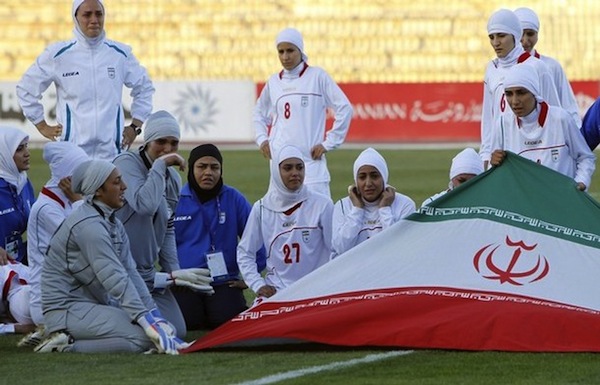By David Gold
October 31 – FIFA vice-president Prince Ali Al Hussein wants rules brought in to allow Islamic headscarves to be worn during football matches.
The hijab has traditionally been banned by FIFA, who will allow women’s players to wear a cap, which goes no further than their hairline.
Al Hussein said that the proposals will ensure “the safe use of hijab in the game” and satisfy “cultural customs”, as well as meeting FIFA rules.
He spoke after an Asian Football Development Project Summit in Amman, Jordan, where he was joined by FIFA Executive Committee member Dr. Michel D’Hooghe, Asian Football Confederation (AFC) Vice President Moya Dodd, as well as current and former female players.
Last year Iran’s women caused a storm when they forfeited a game against Jordan after not being allowed to play with the full Islamic headscarf – rules in the extremely conservative Islamic Republic dictate that female footballers must wear full tracksuits as well as the head covering, which only leaves their eyes, nose and mouth uncovered.
As well as being banned from the football field, a stance supported by the International Olympic Committee (IOC), those wearing it in public have attracted increasing controversy in recent years.
The hijab was banned in France last year, and there has been a backlash against the wearing of the garment in public spaces by those who see it as a sign of political or fundamentalist Islam and a challenge to secularism.

The final communique from the summit said that rather than a religious message the hijab was an expression of cultural identity, and reiterated a commitment towards avoiding discrimination or exclusion of any form on the football field.
FIFA’s Laws of the Game state “the team of a player whose basic compulsory equipment has political, religious or personal slogans or statements will be sanctioned by the competition organiser or by FIFA.”
The hijab could be said to fall into all three of these categories, and any attempt to allow players to wear the garment would have to be approved by the International Football Association Board (IFAB).
In 2007, FIFA also ruled that it was a safety concern, though a number of officials in Islamic countries have been critical of the ban and claimed that it discourages women from playing the game.
FIFA confirmed to insideworldfootball that though Al Hussein can introduce the change for consideration, in banning teams whose players adorn the hijab they are enforcing the same rule which prevents players from wearing snoods, the neck warming apparel which briefly became popular last season.
Contact the writer of this story at zib.l1745026950labto1745026950ofdlr1745026950owedi1745026950sni@d1745026950log.d1745026950ivad1745026950
Related stories
June 2011: Iran in new London 2012 row after women’s footballers banned because of dress
August 2010: Iran coach happy to talk about football rather than clothing
August 2010: Exclusive – Blatter delighted to see Iran compete at Youth Olympics following controversy
August 2010: Blatter to attend Iran girls football team opening match at Youth Olympics
May 2010: Exclusive – FIFA lift Olympic dress ban on Iranian women’s team

